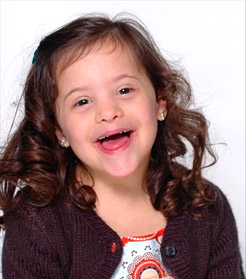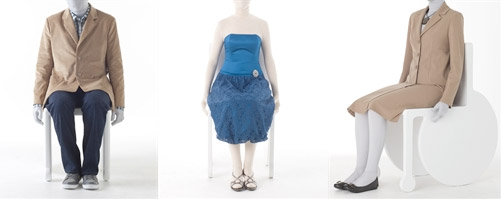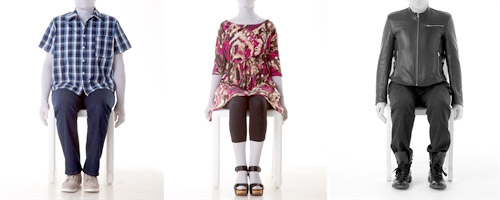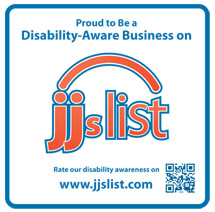By Joan Leotta
 Action. Adventure. Romance. Success against all odds. These are some of the draws of a good movie. Compelling movies make viewers think, invite conversation or debate, and can even change minds and hearts. With all of this in mind, some New York City cinema devotees decided to establish a traveling film festival highlighting stories and inspirations of people with disabilities from around the world.
Action. Adventure. Romance. Success against all odds. These are some of the draws of a good movie. Compelling movies make viewers think, invite conversation or debate, and can even change minds and hearts. With all of this in mind, some New York City cinema devotees decided to establish a traveling film festival highlighting stories and inspirations of people with disabilities from around the world.
The “largest festival in the country dedicated to promoting awareness and appreciation of…people with different disabilities,” the ReelAbilities Film Festival offers post-screening discussions that encourage viewers to, according to the Festival’s mission statement, “explore, discuss, embrace, and celebrate the diversity of our shared human experience.” This chance to consider the insights and possibilities presented in the films helps to reinforce positive images of people with disabilities in society.
Development of the Festival
Ingmar Bergman
The ReelAbilities Film Festival began as an offshoot of projects at the Jewish Community Center in Manhattan. Festival Director Isaac Zablocki says, “We use film to create change here at the Center. I was getting some fabulous films on disabilities.” Anita Altman, founder of the UJA (United Jewish Appeal) Federation’s Task Force on People with Disabilities, had connections in the disability community. “She really made [the Festival] happen,” says Zablocki.
Together with Altman, Zablocki was able to present the first screenings in September 2008 in New York. The founding vision contained the elements that still define the Festival: Powerful international films, multiple venues in a host city, and lively discussions to follow each showing.
Zablocki notes that “although the Festival is headquartered in the JCC in Manhattan, it is not a Jewish festival.” Rather, the event spotlights “films from all over the world centered on people with disabilities.” This year’s New York films included such diverse offerings as:
- Run If You Can, a German story of friendship and love among Ben, a wheelchair user; Christian, his caretaker; and Annika, who cannot decide between the two France’s
- The Straight Line, about a young runner whose emerging blindness does not prevent him from finding love and athletic success
- Defining Beauty: Ms Wheelchair America, a tale of the paths five women take to the Ms. Wheelchair America pageant
- Mabul (“The Flood”), produced in Israel, a coming-of-age drama about a family whose eldest son, an autistic, returns from spending years in an institution
The 2012 New York festival featured 16 films shown at 23 different venues across the New York area, reaching over 6,000 viewers. Other cities to feature ReelAbilities Film Festivals include Atlanta, Cincinnati, Chicago, and Washington, DC. More than 65 groups partnered to support the New York Festival, with funding for the traveling programs coming from the Saul B. Schottenstein Foundation. The Schottenstein contributes to the Festival because it “celebrates the oneness of humanity,” says Zablocki.
Choosing the best
Ossie Davis
Zablocki notes that the selection criteria and structure of the festival have helped contribute to its success. “We want quality films that portray people with disabilities against stereotype,” he explains. Movies are selected by a committee that comprises both members on the Festival Board and people from disability communities. Ravit Turjeman, Festival Co-Director, says, “When we get a film that confronts an issue or deals with a disability where we do not have expertise on the committee that year, we reach out to that disability community for advice.” The committee attempts to present a variety of films, balancing offerings for length and for type of disability.
The Festival has had no trouble attracting high quality films from all over the world. About 200 were submitted to fill the 16 slots for the 2012 Festival. The films ranged in length from just a few minutes to full-length features of up to two hours. Many of these films had won awards in other festivals. “We do not require that a film premiere here,” says Zablocki, “but we do request that the distribution was somewhat limited before entering it in our Festival.”
Measuring Success
Because Turjeman’s background includes marketing, programming, and film distribution, she knows the importance of making connections, both by promoting films among interested communities and through the face-to-face relationships established in the receptions held after the showings. For instance, because My Spectacular Theater, a feature from China, showcased the story of a blind person, the Festival team sent out information about the film throughout the local Asian-American community. Some other movies hold inherent widespread appeal, such as last year’s Warrior Champions about four Iraq War veterans who, after losing limbs and suffering paralysis fighting for their country in Iraq, set out to turn the nightmares of war into Olympic dreams.
Marjorie Rosen
Perhaps the most powerful connections that the Festival makes come through the discussion sessions that bring together audience members and, in many cases, the actors and artists behind the original films. Turjeman notes, “Our audience members might be employers or leaders in the community. After meeting the people who make the films, those who act in the films, and the people with disabilities who are at the show, their attitudes change and they are more willing to interact with people with disabilities and hopefully, to hire them.”
Festival coordinators also measure success with post-screening questionnaires. Turjeman explains, “We survey the audience after each screening and also collect and record anecdotal evidence and comments to determine the impact of the festival on those outside of the disability community and on people with disabilities.”
The survey asks audience members to rate the screening experience in three categories: the film itself, the discussion, and accessibility. The survey also asks whether the film viewing changed the audience member’s perception of people with disabilities. The figures for this year’s New York Festival reveal that 96 percent of the audience members indicated that the festival helped influence their perceptions of people with disabilities. The Festival achieved a score of 4.6 (out of 5) for quality of discussions and for accessibility.
Turjeman indicates that, “so far the results show that perceptions are being changed in our/the community.” These positive perceptions are spreading widely. As a result of the Festival, “people with disabilities are enjoying an improved self image,” she continues. “Our results show that they are being filled with pride and that the Festival reinforces the idea that they have no limits.”
The recent New York Festival offered tangible proof of that positive spirit. “The last showing in New York fell on Valentine’s Day, so we held a dance after the screening,” says Turjeman. “During the dance a woman came up to Ariana Cohen-Halberstam, Festival Program Associate and asked if she had a camera. The woman wanted to take a picture of her 18-year-old daughter who was out on the floor, dancing. She told us, ‘My daughter has never danced with a boy before!’”
ReelAbilities does not offer awards to the films that enter. “We feel that the selection is honor enough,” says Zablocki. “In the four years it’s been held, the Festival has grown into one of our proudest achievements.”
Accessibility
Ever since the beginning, Festival organizers of course recognized the importance of making the Festival accessible to any and all attendees. Each venue guarantees wheelchair accessibility and captioning for all films. ASL interpretation, CART (Communication Access Realtime Translation for the deaf), Live Audio Description, and information in Braille are all available upon advance request. In addition, the Festival committee works hard to select Festival dates that can provide accessibility in any kind of weather while avoiding other major film festival dates. The 2013 New York Festival is set for March 12-17.





 Sophie Morgan, a British artist, disability rights activist, and wheelchair user, is a spokesperson for IZ Adaptive Clothing. Creator of the IMperfect campaign, Morgan also models and has contributed one of her art pieces for the first
Sophie Morgan, a British artist, disability rights activist, and wheelchair user, is a spokesperson for IZ Adaptive Clothing. Creator of the IMperfect campaign, Morgan also models and has contributed one of her art pieces for the first  Looking to develop job and/or advocacy skills? Planning an outing? Need to go shopping? If you live in the Chicago area, there’s a web-based review site that can help you find disability-friendly businesses that suit your needs.
Looking to develop job and/or advocacy skills? Planning an outing? Need to go shopping? If you live in the Chicago area, there’s a web-based review site that can help you find disability-friendly businesses that suit your needs.